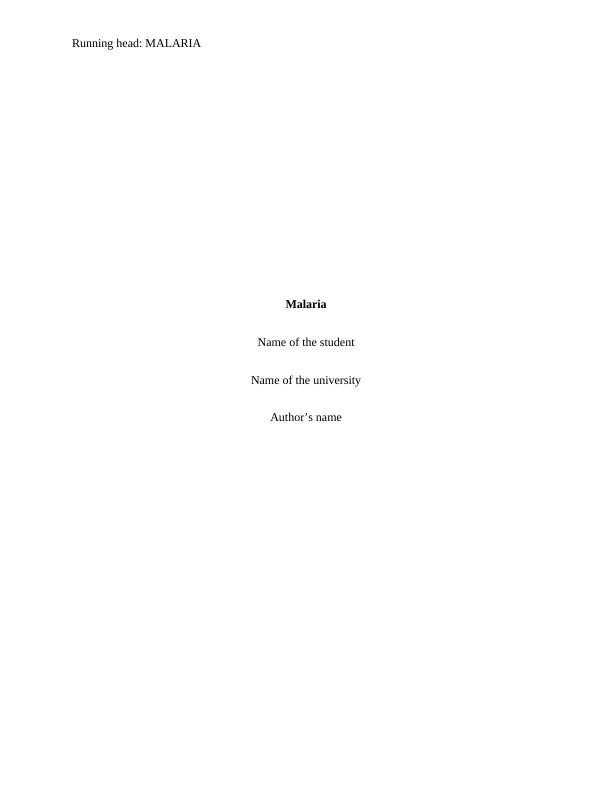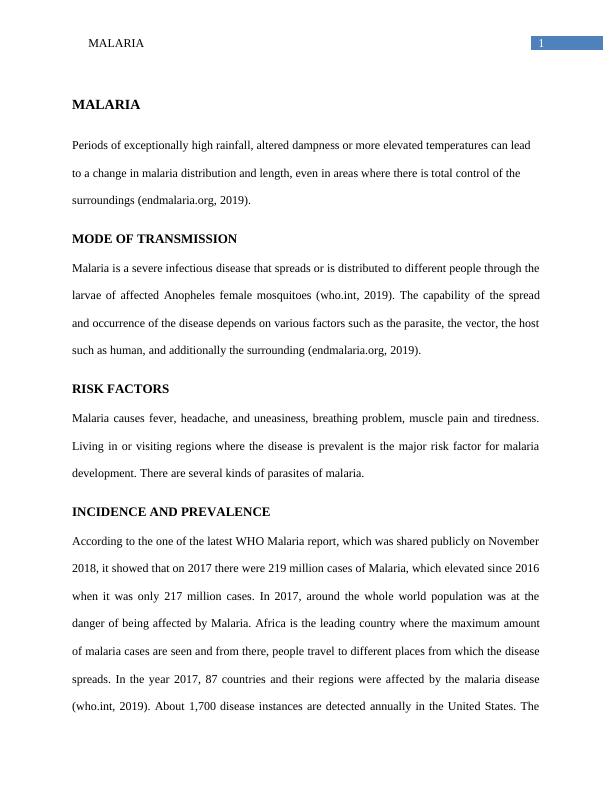About WHO Malaria Report 2022
Added on 2022-10-10
About This Document
Etiology and Incidence and Prevalence Instructions This short paper will be based upon the disease you chose for your final project. Begin by identifying the risk factors for the disease. In addition, discuss modes of transmission and incidence and prevalence for your disease.PHE 321 Milestone Two Guidelines and Rubric Overview: In this module, you learned about the relationship between age and the risk of developing disease, the role of immunizations in disease prevention, and the primary, secondary and tertiary strategies for addressing and treating disease. Based on what you have learned thus far in the course, you should have a good understanding of the risk factors for disease, as well as the modes of transmission, incidence, and prevalence. For this assignment, you will write a short paper on the disease you chose for the final project. In this paper, you will identify the risk factors for your disease and its modes of transmission, incidence, and prevalence
About WHO Malaria Report 2022
Added on 2022-10-10
End of preview
Want to access all the pages? Upload your documents or become a member.


